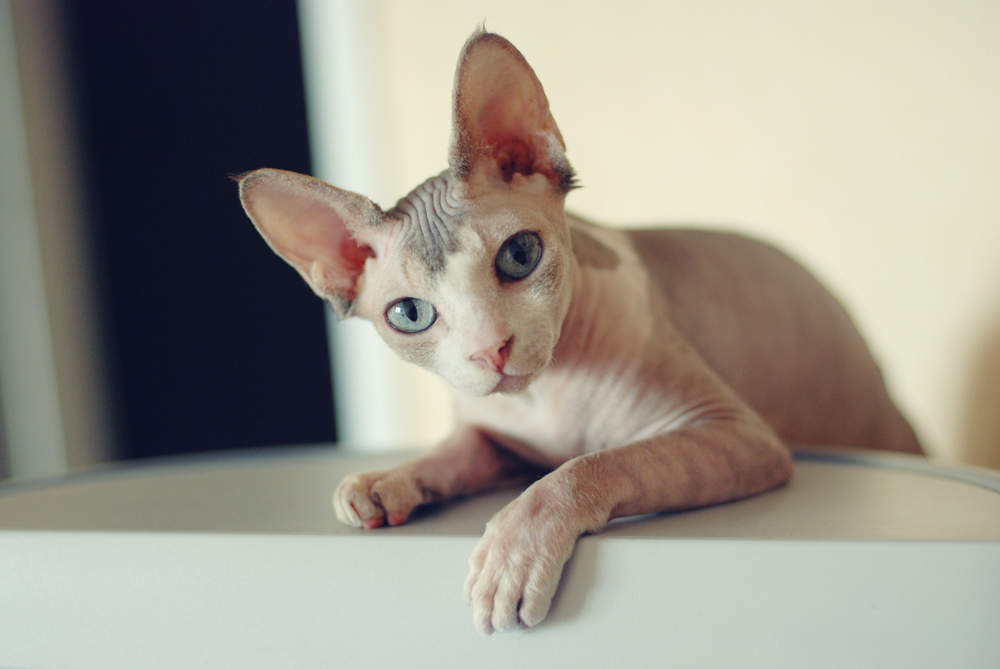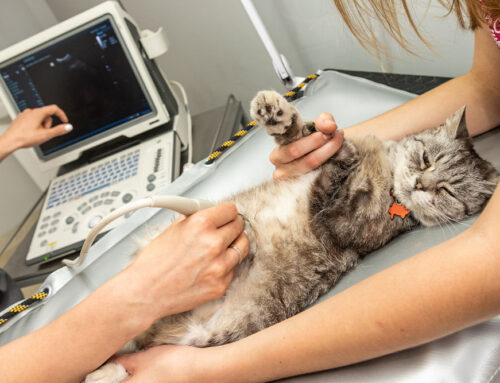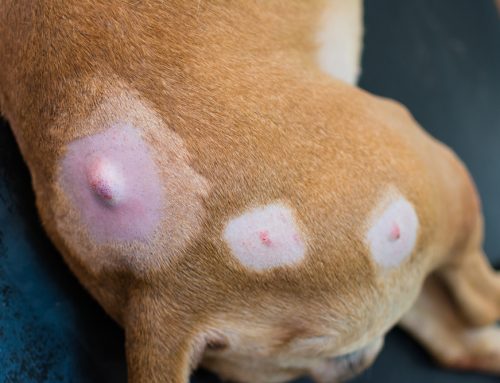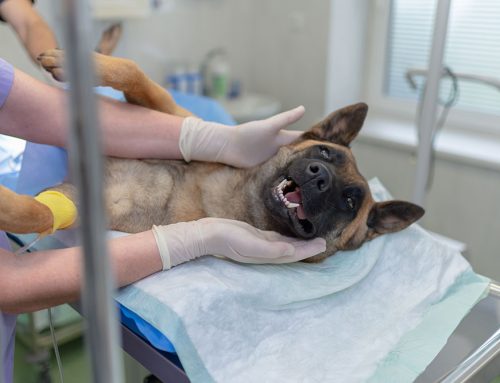Raisin, a ridiculously cute 12-year-old Sphynx who used to love to tear around the house at 3 a.m. with her T-shirt flapping wildly, now prefers to snooze the night away. Mr. Wrinkles, a 10-year-old Shar-Pei, gets a bit testy when his owners playfully ruffle his wrinkles. Bo Peep the sheepdog is intermittently limping on her left hind leg after a not-so-graceful frisbee catching leap left her in a heap on the ground. Can you guess which of these pets is in pain? You may be surprised to learn that the answer is all three. At Burlington Veterinary Center, we take your pet’s pain seriously—so seriously, in fact, that both our veterinarians are members of the International Veterinary Academy of Pain Management, an organization dedicated to preventing and managing animal pain using the best possible practices.
Pet pain 101
Pain is a complex sensation that has both physical and emotional components, and can vary greatly between individuals, making it difficult to quantify and understand. For example, two dogs could have the same musculoskeletal injury, yet perceive it differently. One might be limping, but still wagging her tail, and chowing down on dinner like nothing is wrong, while the other is whimpering, refusing to move, snapping at anyone who gets close, and turning his nose up at food. While the pain is more subtle in the happy-go-lucky dog, it is equally essential to recognize and manage.
Pet pain classification
Pain is often classified as acute or chronic.
- Acute pain — This occurs when tissue is damaged, and serves the biologic purpose of limiting activity, and changing behavior, to prevent further damage and promote healing. Acute pain is experienced at the time of an injury like Bo Peep’s crash landing, a painful illness such as pancreatitis (i.e., pancreas inflammation), or following surgery.
- Chronic pain — This pain, which serves no biologic purpose, persists after the initial injury or illness has been resolved, or occurs because of an ongoing disease process. Raisin and Mr. Wrinkles are both experiencing chronic pain due to arthritis, an ailment that is becoming increasingly prevalent, because pets are living longer.
Pick up on your cat’s pain signs
Since pets can’t use words to tell us when they are in pain, we must rely heavily on noticing pain-related behavior, or posture changes. Common pain signs in cats include:
- Urinating or defecating outside the litter box
- Hiding, or becoming withdrawn or less active
- Increased grooming, especially of one area, or matted hair from lack of grooming
- No longer jumping up on furniture or counters
- Stiff gait, especially on stairs
- Decreased tolerance for petting
- Lack of appetite
Pay attention to your dog’s pain signs
Painful dogs may exhibit the following changes:
- Reluctance to run, jump, or climb stairs
- Whining, howling, or growling
- Biting, or attempting to bite, when some body areas are touched
- Stiff or abnormal posture or gait
- Difficulty changing positions (i.e., from lying to standing, or vice versa)
- Slowing down on walks
- Repetitive licking or chewing at one body area
- Becoming withdrawn, and interacting less with owners or other pets
- Lack of appetite
Raisin’s pain management plan
The great news for painful pets is that a myriad of pain management strategies will improve their comfort and quality of life. Raisin thoroughly enjoyed her visit to Burlington Veterinary Center, because the cat friendly atmosphere was so relaxing, and everyone loved her new hot pink tube top. During her exam, our veterinarians discovered that, like most older cats, she had signs of arthritis in her hips, elbows, and back, which is probably why she no longer felt like tearing around the house, or leaping onto the counter to see what was for dinner. We made these recommendations to manage Raisin’s arthritis:
- Environmental modification — Raisin’s owners can install steps and ramps to help her comfortably access her favorite areas without needing to jump, use a large, low-sided litter box that is easier for her to get in and out, and ensure she has plenty of comfy beds.
- Exercise — Raisin’s owner can use kitty toys to help Raisin maintain her range of motion, and fitness level.
- Alternative medicine — Our veterinary team is skilled at using acupuncture, massage therapy, and laser therapy to relieve pain and inflammation associated with arthritis, and other musculoskeletal conditions.
Mr. Wrinkles’ pain management plan

Mr. Wrinkles was also diagnosed with arthritis in his hips and back, which explains his sudden dislike of petting on those areas. Much like Raisin, his pain management plan involves alternative medicine, daily exercise, and the use of ramps, stairs, and comfy beds. He was started on a course of pain medication, to further improve his comfort level and, since he is rather rotund, our team recommended he lose weight, to reduce stress on his bones and joints.
Bo Peep’s pain management plan
Bo Peep, unfortunately, tore the cranial cruciate ligament in her knee when she landed with a flop, so she will need corrective surgery. We started her on pain medications, and are managing her pain and inflammation with laser therapy while she waits for surgery, and will continue those therapies post-op.
If you think your pet could be in pain, contact our Burlington Veterinary Center team. There is no reason that your furry—or in Raisin’s case, not so furry—friend has to suffer silently, when so many pain-relieving options exist.







Leave A Comment